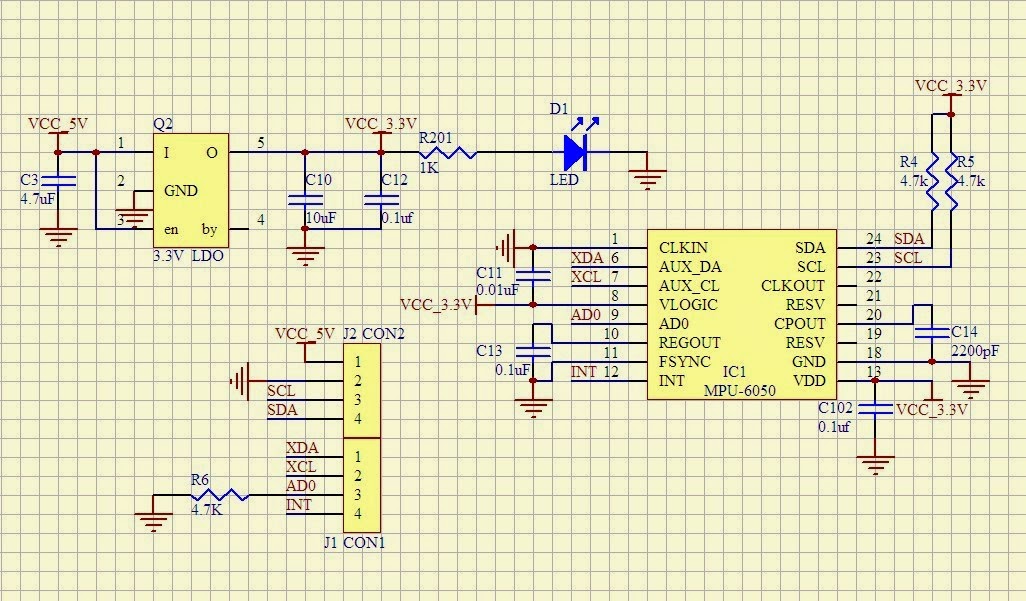Embedded programming
Assigment objetive:
1- Read a microcontroller data sheet
2- Program your board to do something, with as many different programming languages
and programming environments as possible
1- Read a microcontroller data sheet
In this assignment I read a Arduino MPU-6050 accelerometer datasheet because I will need to know how it’s works to apply and accelerometer and gyroscope to my final project. You can see in the next image a schematic of MPU-6050 board.

Something that calls my attention is how complex could be each component inside one of these boards when you read the data sheet. What I found very interesting is the gyroscope and the different pins that it has.

Ones I felt that I really understand that circuit I try to connect Arduino and run the program to get data of the position of MPU-6050 in computer. In this chance I proceed carefully in order to understand what I was doing and how the circuit could be working.
I initiated with a simple program to get a led blink once I pressed the button. But something happened and I wasn’t working. Then I figured out what was happening. And I realize that I forgot to joint tow pins in my designed board. I find a solution to no-connected pins soldering them with a cable.


2- Program your board to do something
I used the in-circuit programmer that I did in 4th week to program the Hello World board that I did in the 6th week (that is the magic of Fab academy, use what you make). To make this assignment happened I used Arduino Software. First I had to configure the ATtiny microprocessor with ATtiny44 option.

Next step was upload the simple example code in Arduino to bink LED ones. Then run the program in board and test it successfully.

And finally, I’ve been mixing codes and generating code in order to get different blink LED results as you can see in the video at the beginning of this page. Also I’ve been experimenting with generate code in Python and Scratch (blocks programming). I’m in love with scratch program :)

Then I found two options to define the design and I decided to use Grasshopper parametric function to cut each piece in order to get the cut lines to introduce in CNC machine.



